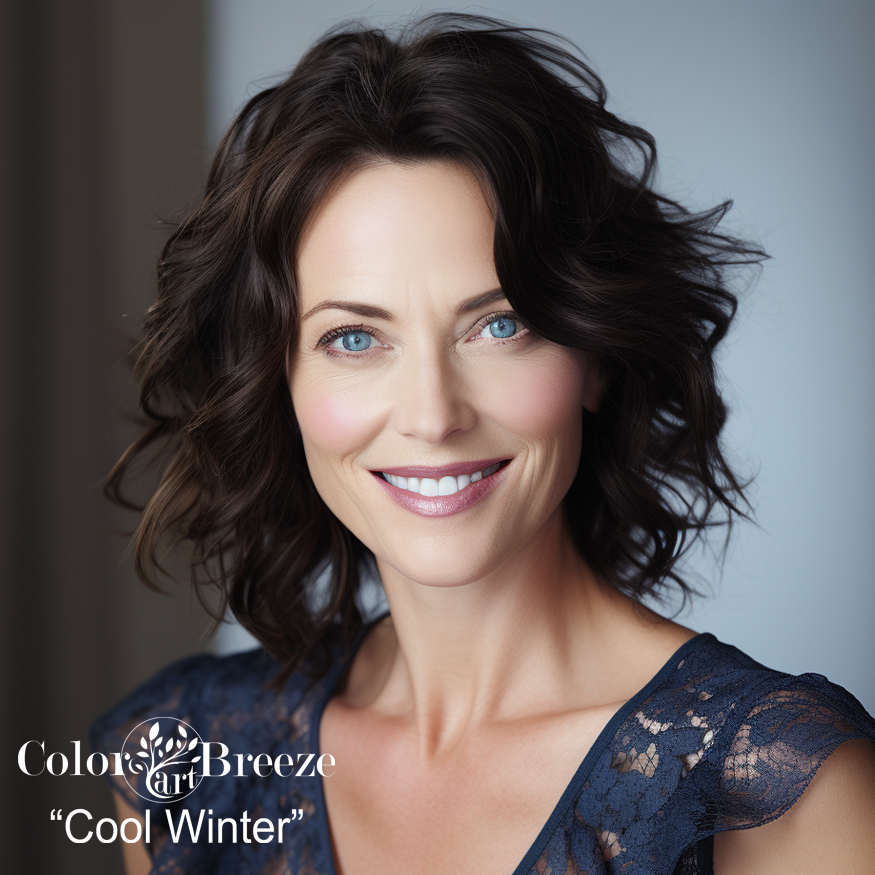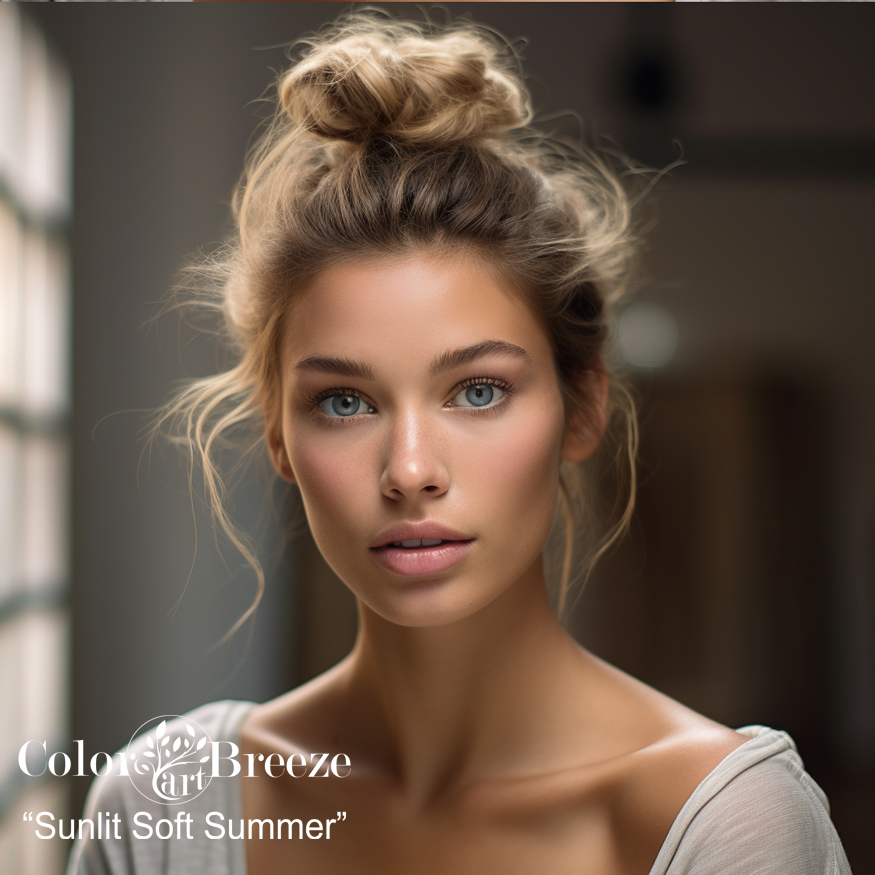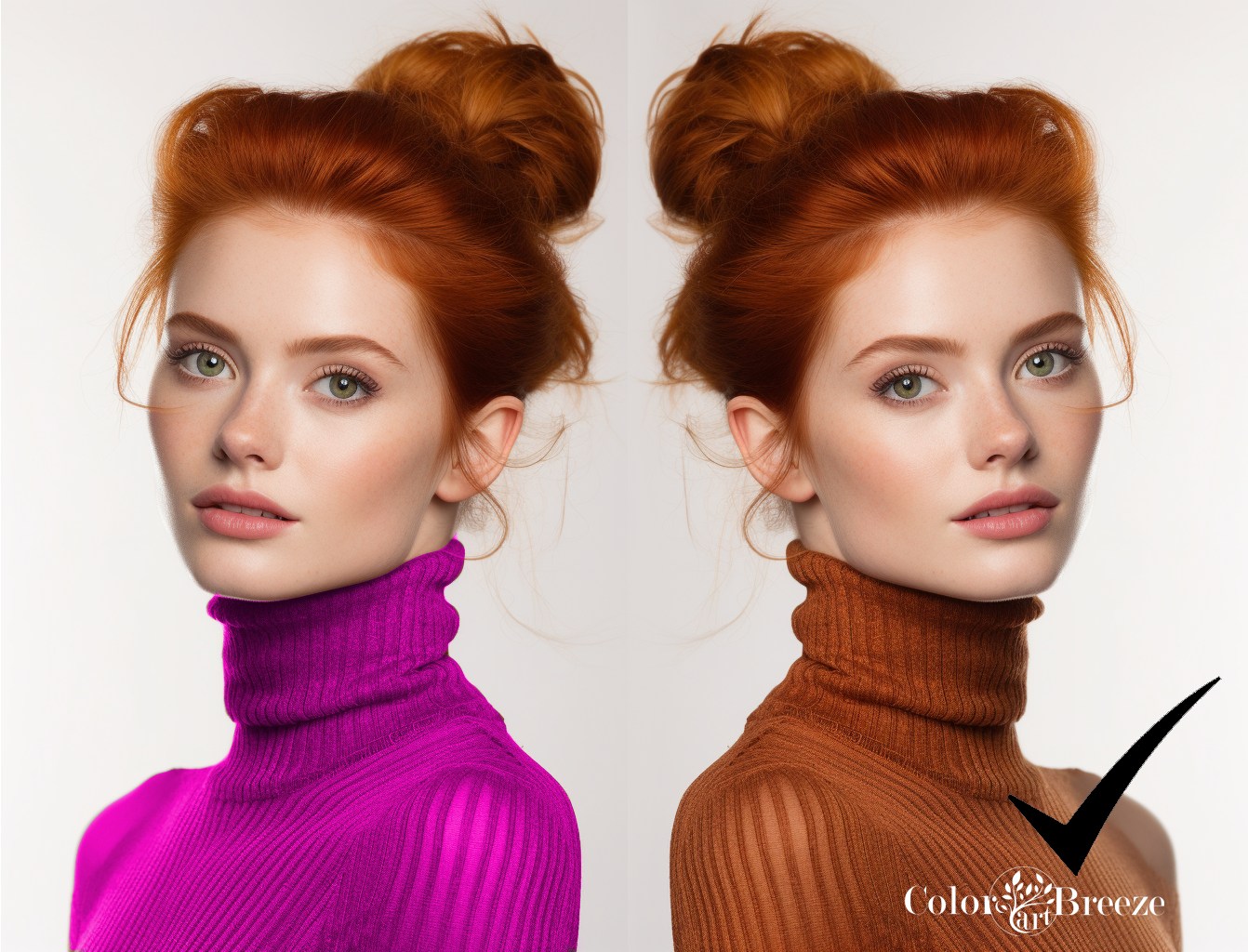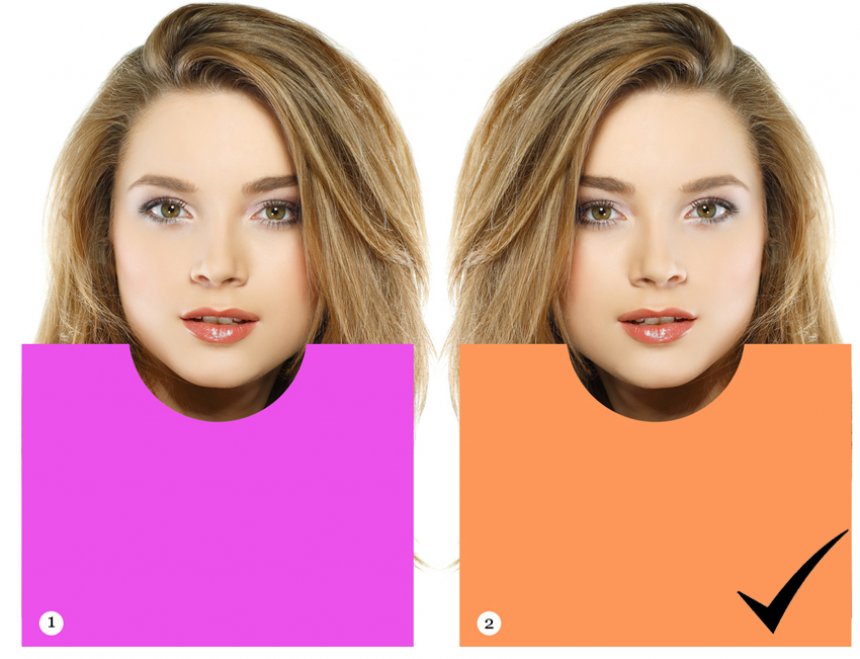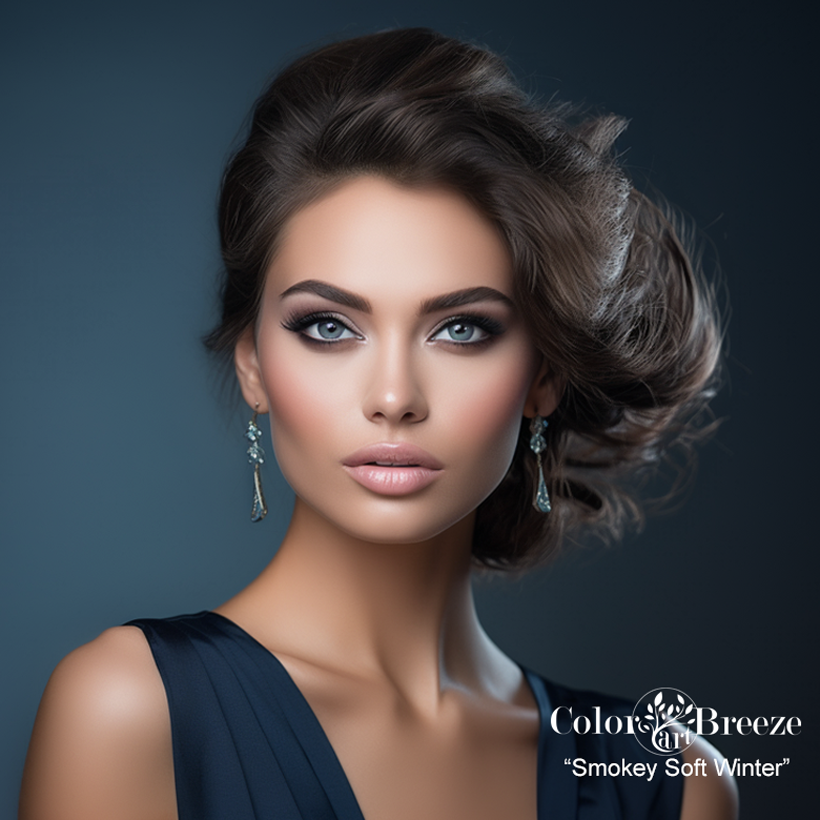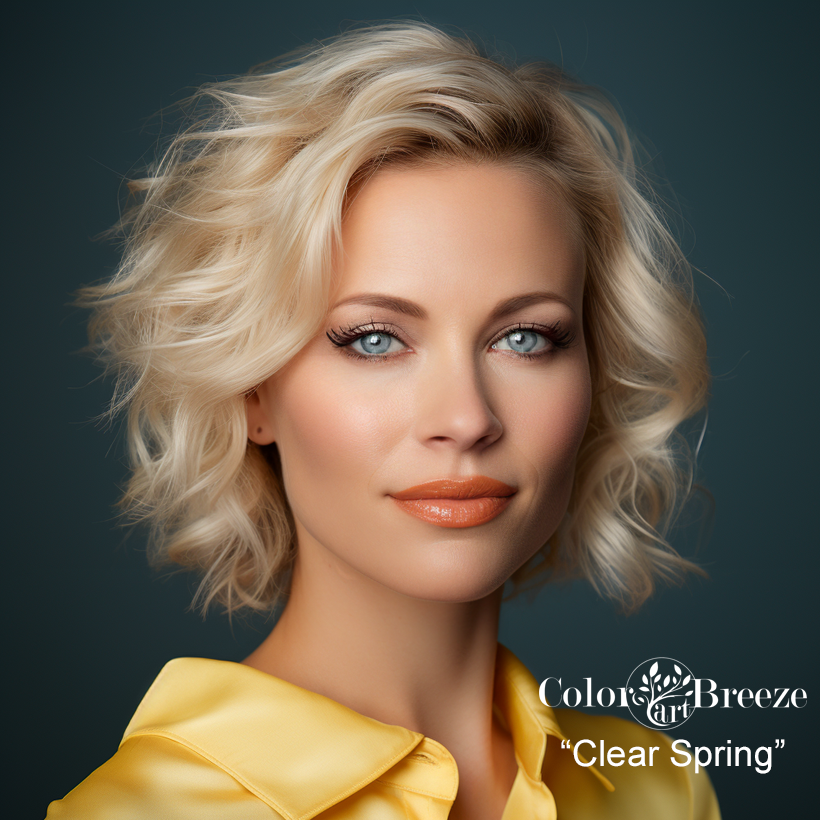Analyze Yourself
I created these three steps to show you how to analyze yourself using the 12-season system. I used this system for years. But now I'm using a much more advanced system. But you know what? These steps are a good way to begin any analysis.
And you need a good understanding of the 12-seasons before you can really understand my ColorBreeze System. So this is how you can color analyze yourself by determining your dominant trait.
However, be aware that sometimes a person's dominant trait is not obvious. At all. So, if that is your case, no worries. You can instead follow my alternate method, at the bottom of the page.
Note: Sometimes this method is called the "Tonal Method."
To begin, study yourself without makeup, in the best light possible (preferably daylight).
1. Determine your dominant characteristic.
- Deep: Strong, rich, dark coloring
- Light: Very light and delicate
- Warm: Yellow-based colors, no blue undertones
- Cool: Blue based colors, no yellow or golden undertones
- Clear: Bright, clear colors, nothing muted or dusty
- Muted: Soft, dusty colors; nothing bright and overpowering; often quite neutral in temperature and saturation.
Here are some examples for each of the six dominant traits
FYI: I have fully labeled each person in any examples that I use from my ColorBreeze Art. Some may match a season in the 12-season system, or some may be exclusive to ColorBreeze. But its dominant trait will be labeled as such. You can learn more about the system further here, when you are ready to move on to more seasons.
2. Determine secondary characteristic
Once you’ve determined your dominant characteristic, next decide if the warmer or the cooler colors look better. For example, if your dominant trait is "Deep", decide if the deep cool colors - like navy and dark red - look best on you, or the deep warm colors like chocolate brown and forest green
For those whose dominant trait is already "Warm" or "Cool", decide your chroma next. For example: if your dominant trait is “Warm”, and your chroma is clear and more delicate, then you are a Warm Spring. But if your chroma is muted, you are a Warm Autumn.
Deep, Cool Colors = Deep Winter
Deep, warm colors = Deep Autumn
Light, warm colors = Light Spring
Light, Cool colors = Light Summer
Clear, cool colors = Clear Winter
Clear, warm colors = Clear Spring
Soft, warm colors = Soft Autumn
Soft, cool colors = Soft Summer
Warm, clear colors = Warm Spring
Warm, muted colors = Warm Autumn
Cool, muted colors = Cool Summer
Cool, clear colors = Cool Winter
3. Test Drape Key Colors
If you have determined your dominant trait and are still a little unsure whether you lean toward cool colors or warm colors, then test these colors against your face with a swatch, a scarf, sweater, or my Face Flash Cards.
While most seasons share colors from their “sister season”, there will be certain colors which will look best for one season over the other. Below are some of those colors for each dominant group:
Deep Autumn vs. Deep Winter
Salmon Pink vs. Fuchsia
Light Peach vs. Icy Pink
Terracotta vs. Burgundy
Light Spring vs. Light Summer
Bright Coral vs. Deep Rose
Camel vs. Cocoa
Light moss vs. Aqua green
Warm Spring vs. Warm Autumn
Light Mango vs. Pumpkin
Medium Blue vs. Jade
Clear Red vs. Rust
Cool Summer vs. Cool Winter
Soft White vs. Pure white
Lavender vs. Royal Purple
Raspberry vs. True Red
Soft Summer vs. Soft Autumn
Blue Green vs. Olive Green
Soft Fuchsia vs. Salmon Pink
Burgundy vs. Mahogany
Clear Spring vs. Clear Winter
Warm Pink vs. Magenta
True Green vs. Pine Green
Clear Teal vs. Royal Blue
Alternate Method to Analyze Yourself
The alternative method for analyzing yourself is to simply determine your undertone. This is actually how most systems start an analysis but I wanted to talk about the 'dominant trait' method since it is easiest if your dominant trait super obvious. Because who needs to complicate things if it is not necessary?
Some color systems insist one has to be draped (very often at a high price) since someone can turn out to be any season at all. (I busted that myth in my "15 Myths of Color Analysis" Report).
While I agree there can be some small surprises in a draping, like someone turning out to be a Deep Autumn rather than a Deep Winter, or a Light Summer is actually a light soft summer, these are not radically different seasons. The Deep Autumn and Deep Winter share the same dominant trait and are sister-seasons. The Light Summer and Soft Summer light are both Summers whose value is quite light.
Fine tuning it is great and is what we do in the advanced ColorBreeze system, but simple observations should get you to one's dominant trait or at least her main season.
But back to determining one's undertones: the way to do this is to use at least one, but more can be helpful, set of test drapes to draw out one's undertone. By "set" I mean two colors. Start with a hot pink and a clear bright orange. If you have really light, soft coloring, you could use pastel pink and pastel peach.
The purpose of test drapes is simply to see which color looks better, or at least not the worst, under your face.
Important: Neither drape may be your best color, or maybe both look pretty good. But one should be better or worse than the other one.
In this example below, I wanted to show you what the wrong color can look like and what the exact right color can look like. What you are looking for is not the color itself and which is a "better" color. Your color preferences should not play into this process at all.
I personally love hot pink/purple as a color by itself. She doesn't look bad in it. But on her it does nothing to enhance or harmonize with her eyes, skin, and hair.
What we are looking for is "BHAM" - blend, harmonize, amplify and/or match. The warm brown definitely blends and harmonizes with her coloring. The earthy green of her eyes are enhanced and takes on a slight glow.
That is what we are looking for in color analysis.
Here are some more things to look for when you color analyze yourself.
Hair Color |
Eye Color |
Absolutely no idea what your season is?
Back to Home page


